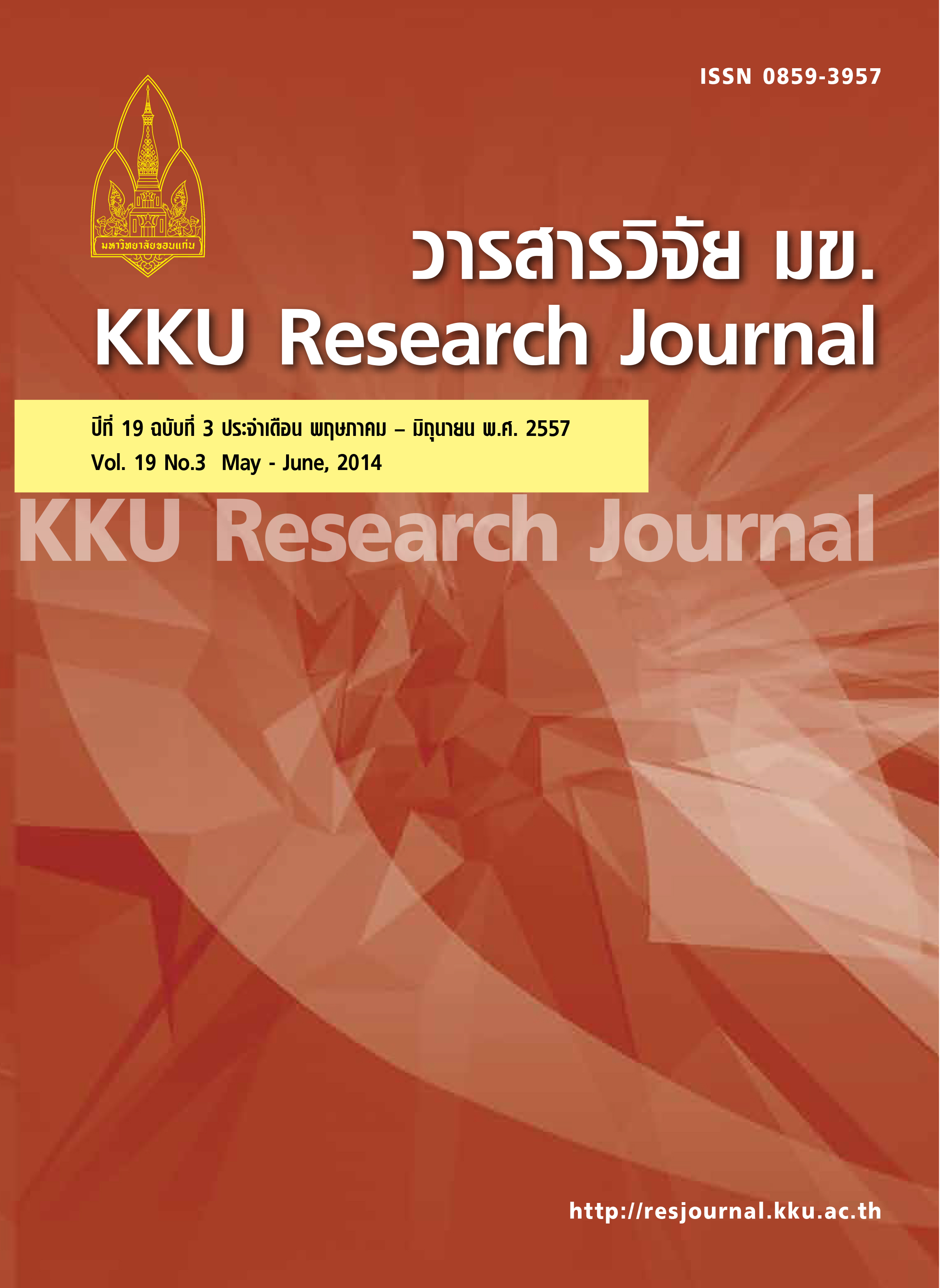Fructooligosaccharides in food and commercial food products in Thailand
Main Article Content
Abstract
Fructooligosaccharides (FOS) are one of oligosaccharides which a mixture of short-chain fructose polymers. The recognised properties of FOS are soluble dietary fiber which cannot be digested in the small intestines and prebiotic for normal flora in colon. The higher solubility of FOS compared to polymeric inulin makes it more easily available and therefore more rapidly fermentable by the microbiota in the colon. However, there are no information of FOS in Thai foods. This study aimed to determine the Fructooligosaccharides [FOS; 1-kestose (1-kestotriose, GF2), nystose (1, 1-kestotetraose, GF3), and 1F-B-fructofuranosylnystose (1,1,1-kestopentaose, GF4)] in 192 samples of seventeen commercial inulin and/or FOS fortified food products. Inulin and FOS were extracted with hot water, digested with inulinase and determined by gas chromatography. The result showed that inulin and FOS fortified food products in five most popular were beverage with different flavours, drinking yoghurt, milk powder, cream yoghurt, and beverage instant powder (10, 10, 9, 9 and 9% of the total number of samples, respectively). For dried food products, the high level of fructans (inulin + FOS) in this group was found in inulin powder, Kaentawan powder and beverage instant powder (85.0+-8.6, 51.5+-14.5 and 24.0+-19.7 g/100g, respectively) whereas drinking coffee was found highest (5.2?1.7 g/100g) in semiliquid and liquid food products. High level of FOS also found in inulin powder and Kaentawan powder (10.9+-4.4 and 18.5+-8.8 g/100g respectively). Ratio of FOS to fructans with the level more than 20% was found in Kaentawan powder, milk powder, soybean milk and drinking yoghurt (40.5%, 34.8%, 24.2%, and 23.4%, respectively). Most food products had proportion of GF4 > GF3 > GF2. The FOS data generated from this study can be used as a tool for product development, nutrition education, and decision making by consumers on selected foods.


